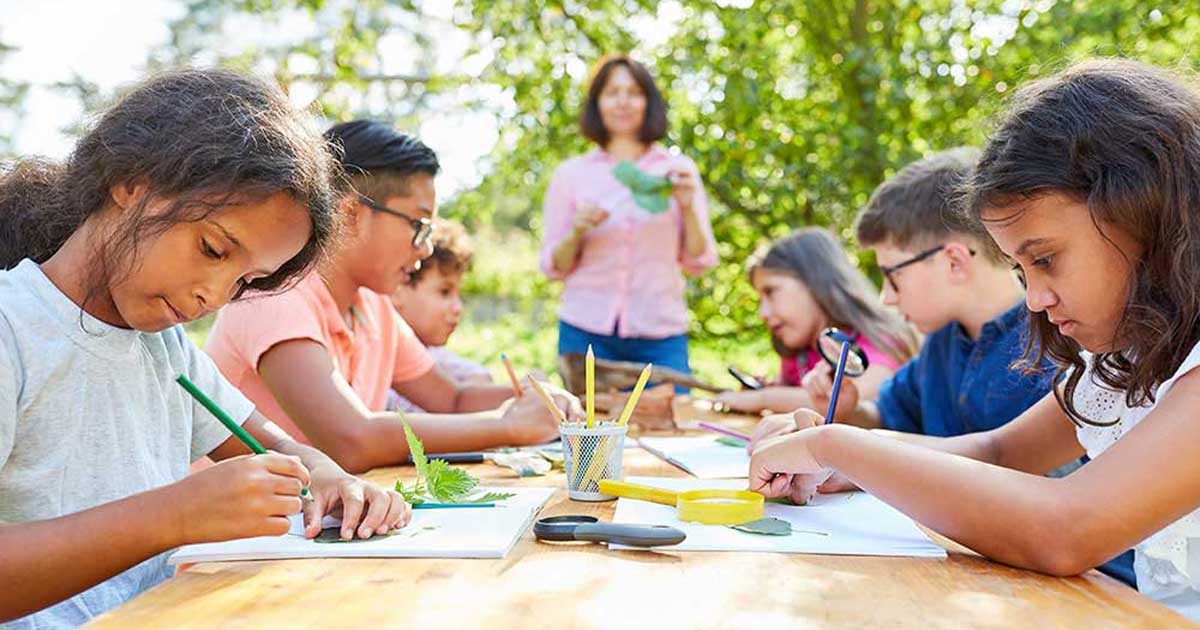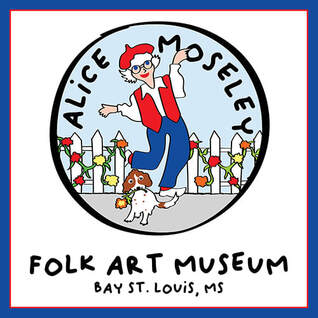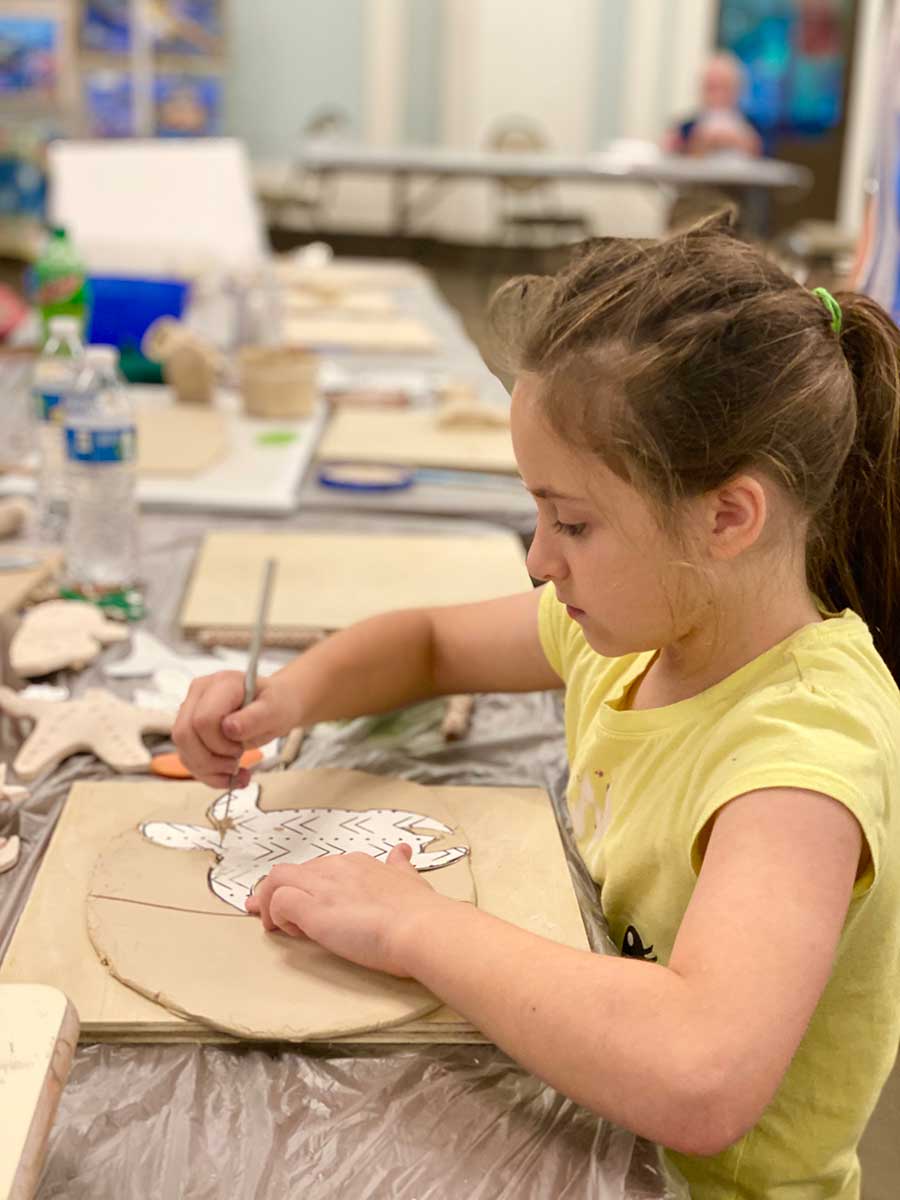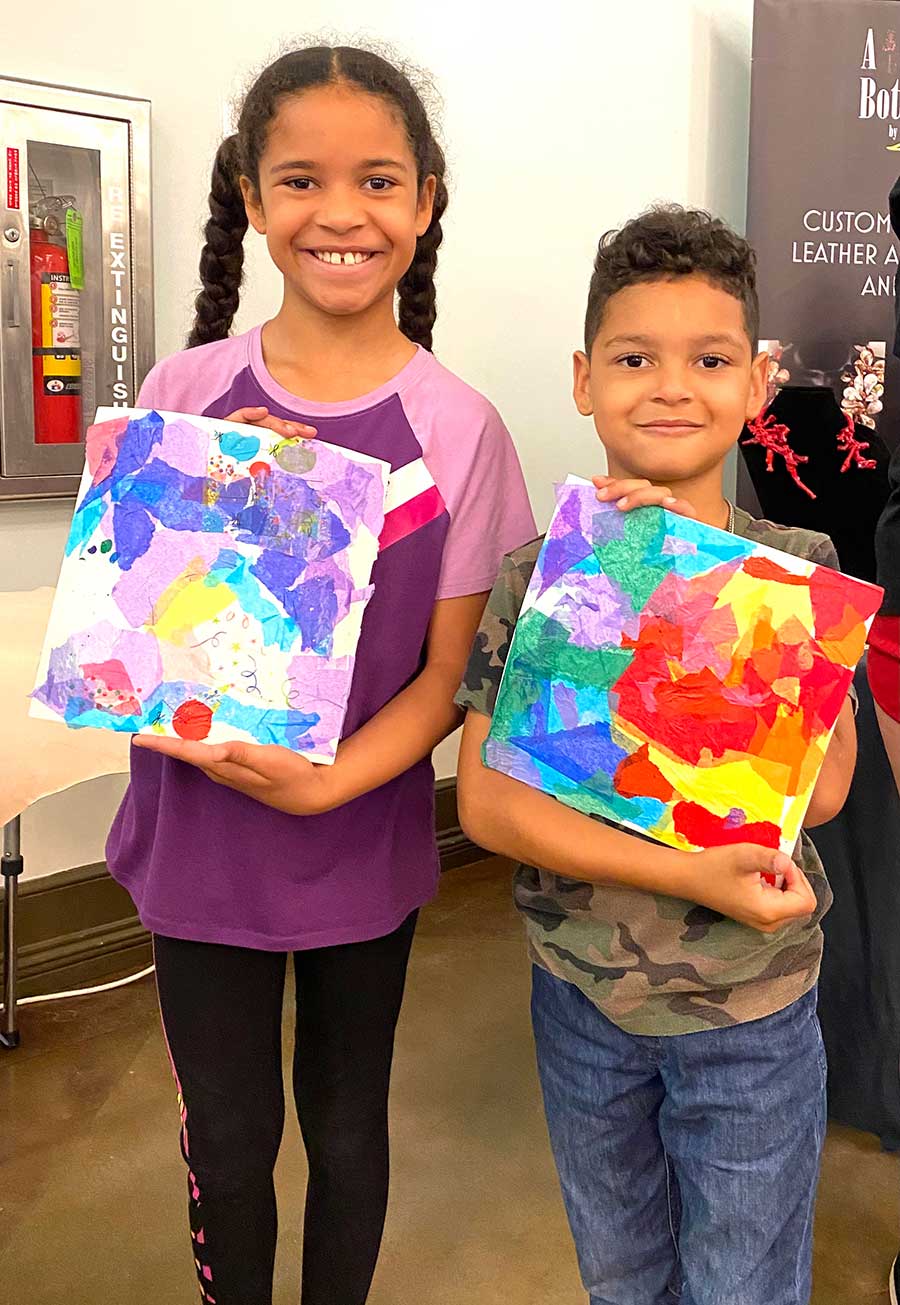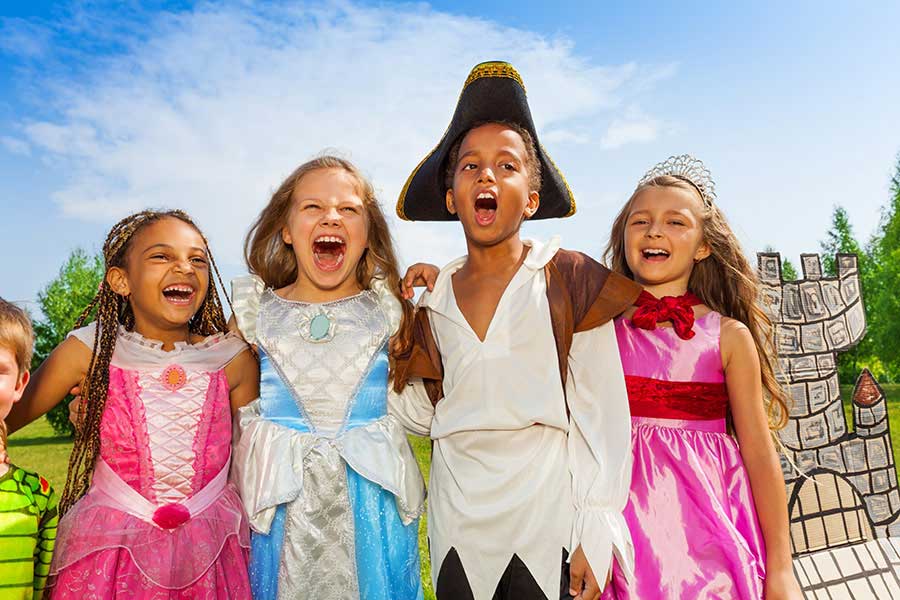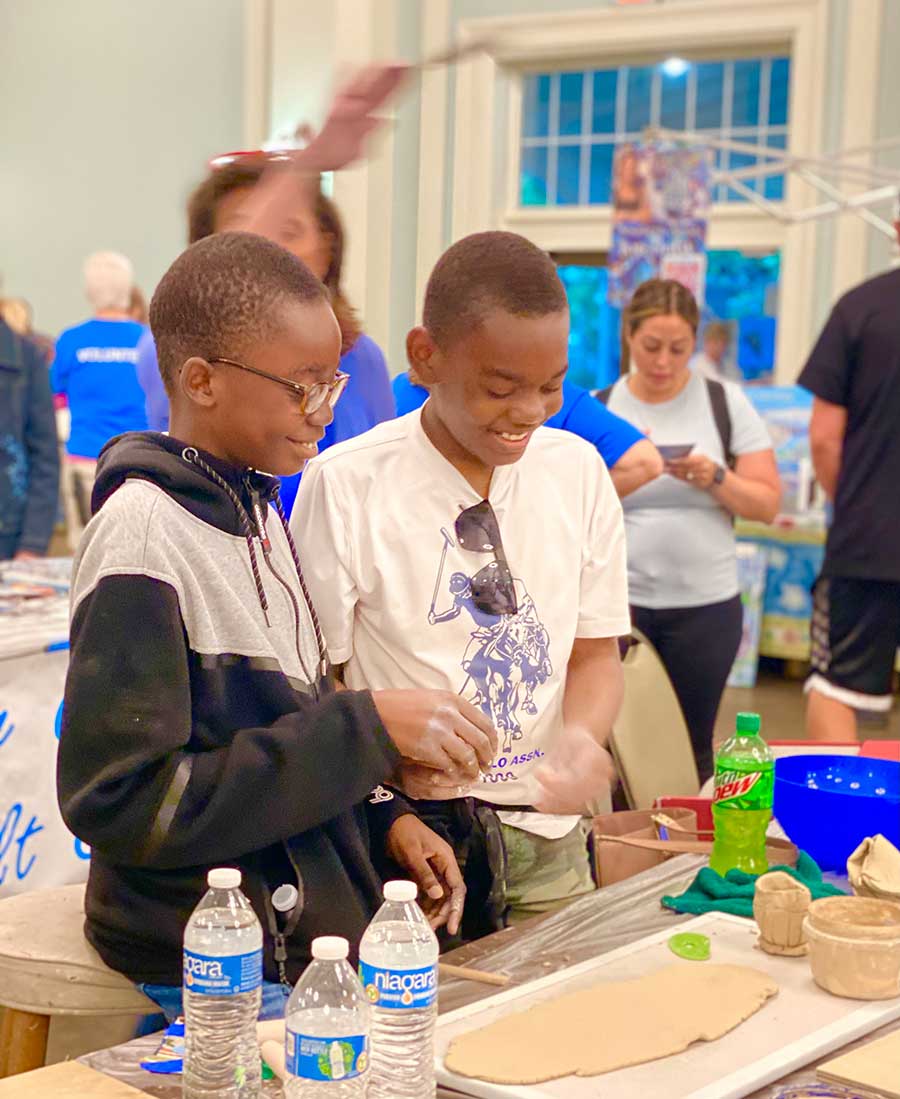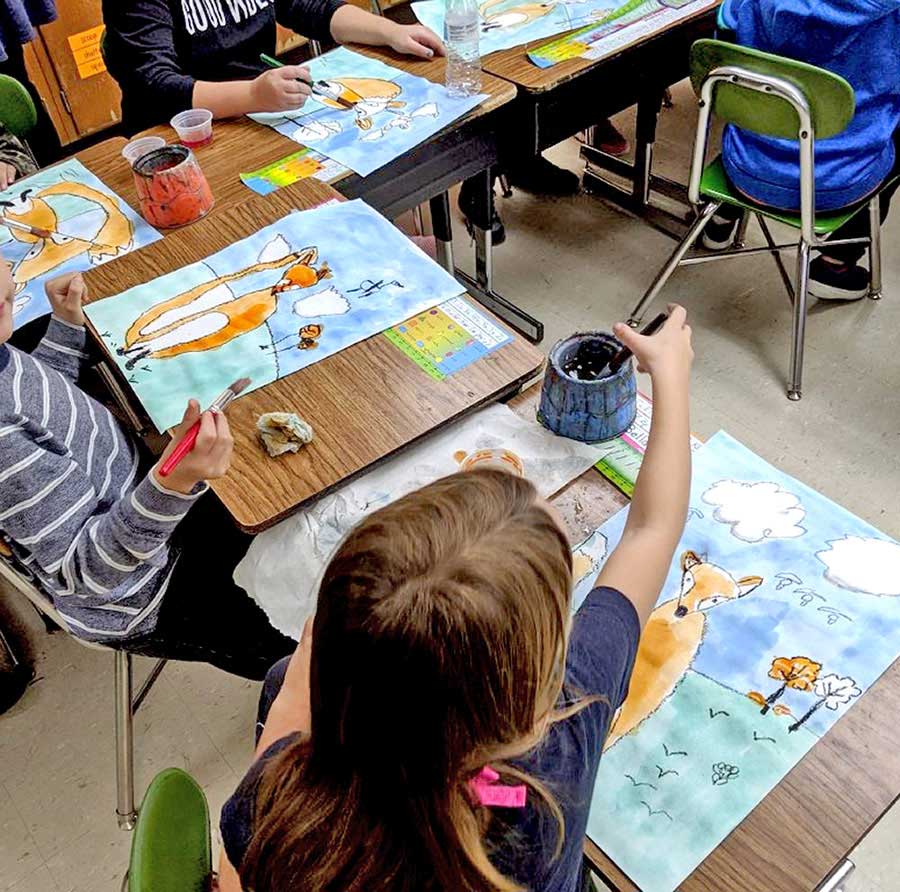Part two of a three-part series discussing the importance and impacts of educating the community’s youth in the arts. Find Part One HERE.
– By Connie Voight
Arts Alive is supported by
Art forces students to look at the world differently and through many lenses. Visual art, theatre, and music teach perspective, patience, confidence, hand-eye coordination, tolerance, and empathy. Likewise, students use what they’ve learned in their art classes in their “core” classes. A production of The Crucible teaches about McCarthyism; to study Baroque music, students must understand 17th through 18th-century European History; and to explore the origins of visual art, most students will study ancient cave paintings. When asked why she decided to pursue a career in the arts, Bay St. Louis resident and retired art teacher Rosie Dumoulin said, “I realized that art is one of the few subjects that allow and encourage creative, divergent thinking. Art is definitely a reflection of life.” Dumoulin continues, “Art connects to life in so many places. The longer I taught, the more I realized that art helped students figure out the real challenges to thinking and finding the solutions needed to navigate the world.” Making art means reaching deep into your creative soul and getting in touch with your feelings. As a result, art students learn to trust their peers. This often happens in a visual arts classroom, a choir, or in the cast of a play; students learn to trust their fellow artists. This is why many students refer to their art classrooms as safe spaces. Dr. Julian Bryson, composer and director of choral activities at Jacksonville State University, sums up this idea. “I believe that art allows us to practice living without the risk of dying. I frequently use this concept to encourage students not to be afraid of mistakes. In music, if we miss a note, nobody dies. That can be quite a liberating concept. I also believe that the avant-garde can help us learn to be patient and curious while developing empathy.” Using skills learned in a variety of art classes, a group of students took on a service project that included a garden redo at a special-needs preschool. With the overhaul completed, two student teams were challenged to create planter boxes out of lumber scraps in only one hour. The two teams assessed their materials, collaborated on and drew their designs, evaluated each other’s skills to assign jobs, and used critical thinking to chart a path to completion. Both teams were successful, and the planters were a great surprise for the school. Rachel, a medical student at the University of Virginia, was heavily involved in her high school’s theatre program. “Theatre gave me one of the first communities where I truly found myself beyond my family. I think that’s where a lot of my self-confidence came from. I don’t think I would be who I am today without my theatre involvement, even if it isn’t the center of my day anymore.” Rachel wrote “many a college essay” on the interconnection between science and art. “I think this is how I found my passion for integrating public health and medicine.” The need for good arts education programs is especially true for the youngest participants. “I remember being so excited to go to dance class as a preschooler and the thrill of putting on the costume for my first recital,” writes Dr. Regan Humphrey. “I remember performances by our local children’s theatre, getting swept up in the story and being star-struck when I got the character’s autographs after the show. I really don’t remember a time when the arts were not a part of my life.” Now the director of community outreach at Currey Ingram Academy in Nashville, Tennessee, Humphrey explains, “Even though I was quite shy growing up, my experience with the performing arts gave me a sense of self-confidence. My school’s theatre department was one of the first places where I saw myself as a leader, both within our school and at the state level. That experience laid the foundation for my work today.” The impact of the arts in our schools is astounding! It doesn’t matter that most of these children don’t grow up to be conductors, authors, painters, or actors. Yes, they may paint for fun or join a community theatre or orchestra to fill their evenings, but whether or not children make the arts a career is not important. What is important are the skills and depth of understanding learned in an arts classroom. “I don’t consider any of my past careers as particularly artistic, but I believe to the core that every one of my jobs was successful BECAUSE of the creative and non-traditional ways of looking at a problem or approaching a project that my literal and visual art lessons taught me,” responds John Dumoulin, BSL resident and NASA retiree, artist, author, and museum consultant. “What matters is what the arts can impart to students that, years later, continue to inspire and impact.” William Bennett, Former US Secretary of Education, sums up the importance of the arts this way: “The arts are an essential element of education, just like reading, writing, and arithmetic. Music, dance, painting, and theatre are all keys that unlock profound human understanding and accomplishment.” Bay St. Louis resident and artist Kat Fitzpatrick grew up looking over the shoulder of her artist mother. “It was the most wonderful thing I’d ever seen,” she fondly remembers. After graduating from the University of New Orleans, the University of Florida, and William Carey University, Fitzpatrick taught K-6 art at Coast Episcopal School. She taught all mediums, from clay and sculpture to watercolor, oils, and pastels. A self-described introvert, Fitzpatrick considered art her “place of joy.” Fitzpatrick’s daughter followed in her footsteps, but not in the same way. A chef in Nashville, Tennessee, she was inspired by the art on her restaurant’s walls. Not only were the meals an ode to specific works of art, but they were art! As Fitzpatrick says, “There’s a place for everyone in the world of art.” Enjoy this feature?Comments are closed.
|
Archives
February 2024
Categories
All
|
Shoofly Magazine Partners
Our Shoofly Partners are local businesses and organizations who share our mission to enrich community life in Bay St. Louis, Waveland, Diamondhead and Pass Christian. These are limited in number to maximize visibility. Email us now to become a Shoofly Partner!

